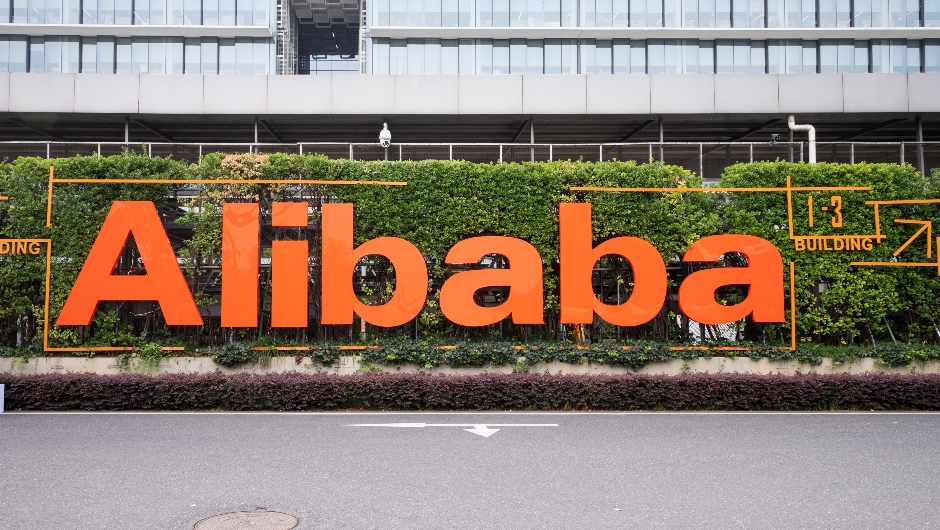Pushing pooling innovation through Alipay

Chinese e-commerce giant Alibaba has pointed the way ahead in cash management for users of digital wallets by integrating these accounts into its cross-bank pooling structure.
With its huge revenues ($22.8bn in Q3 20 alone), multiple platforms and reach across both B2B and B2C markets, Alibaba is no ordinary company. The Chinese e-commerce giant’s treasury strategy is similarly unconventional.
Cutting-edge technology, strong cash flow and a bank-like in-house digital payments channel (Alipay, now the world’s largest consumer finance app) equip it to go its own way in cash and liquidity management. One particularly notable development: Alibaba has built an innovative cash pooling structure around Alipay’s capacities, the company’s treasury team has revealed to EuroFinance.
Alibaba’s approach is based on the digital wallets that underpin Alipay. The company uses these in its daily operations to store funds and make transactions. Unlike bank accounts they pay no interest and don’t have deposit insurance.
“Digital wallets have gotten increasingly popular,” notes Sharon Wang, Treasury Director, Group Treasury at Alibaba. “Payers and payees often use digital modes to send or receive money instead of selling physically with cash or with bank accounts.”
Alibaba now maintains as many digital wallets as bank accounts. Accordingly, it would have wanted a pooling structure for its digital wallets – whose counterparty risk it compares to vendor risk, requiring similarly careful monitoring – even if it were not a major owner of Alipay (see box).
Central to treasury
While Alibaba declines to specify the typical end-of-day balance in its Alipay header account, it discloses that it operates Alipay accounts in 12 currencies globally. Besides Chinese renminbi, these include Hong Kong and US dollars, as well as euros.

“In a nutshell, Alipay excels in the aspects of the currencies supported, e-money float, account security set-up, transaction fees and customized solutions,” Wang comments.
The Alipay accounts form part of a target-balancing cross-bank pooling structure. When their balances fall below pre-determined thresholds, they are automatically funded to the target amount in real time from balances with its cash management banks.
The Alipay and bank pools are “supplementary”, Wang judges, characterising the former as an integral part of the overall pooling structure. She declines to say if Alipay pooling is cheaper since the comparison is not straightforward.
Note that in the pooling structure’s earliest version, treasury checked the Alipay account balances every 15 minutes. The lack of real-time monitoring exposed the company to the risk, in the most extreme case, of one of its Alipay accounts running out of cash between checks if a very large transaction (or a very high number of transactions) went through in that small window.
It also involved frequent fund flows between Alibaba’s cash management banks and its Alipay accounts during the day. Moreover, it required substantial buffer balances in the Alipay accounts.
Both the number of transactions and the size of these balances has fallen with Alibaba moving to a 5-minute interval in the pool’s current ‘Phase 2’ incarnation.
At the end of each day, the Alipay header account concentrates funds received by pool participants. It then sweeps these to high-yield bank accounts to maximise returns. Since Alibaba adopted Alipay pooling, its bank deposit balances – and thereby interest income – have increased, Wang says.
Wang emphasises this arrangement’s similarity to modern banking solutions. This “improves operational efficiency and cash investment yields,” she judges.
Third version
Despite ‘Phase 2’ of Alibaba’s Alipay cash pool only going live in August 2020, the company is already moving into a third iteration of the structure.
In ‘Phase 2’ it had already begun grouping all entities’ accounts with Alipay rather than attaching each to an individual bank account. The goal now is to further simplify the structure and eliminate unnecessary transactions.
Fewer transactions will reduce the pool’s costs. It will also give Alibaba greater control of the arrangement.
At an operational level, ‘Phase 3’ will remove the Alipay header account by linking all of Alibaba’s Alipay accounts directly to a cross-bank pool header. This will mean that all sweeping-up and sweeping-down transactions are between the header and participating accounts (either with banks or Alipay).
Sweeping-down is not enabled in ‘Phase 2’, Wang notes.
Meanwhile, intra-day and inter-day overdraft limits are still set up with Alipay to enable sweeping of net positions by the end of each day.
Coming next
Even once ‘Phase 3’ is completed, Alibaba is looking to extend its use of Alipay in treasury as the payments system develops further. “From a treasury perspective, we wish to see new innovative products and services to achieve operational excellence, such as digital solutions to reduce manual efforts in account management and payment processing,” says Wang.
Moreover, Alipay has already developed a blockchain solution termed ‘AntChain’, according to the Ant Group IPO prospectus.
Alipay innovations should also help enhance yields on Alibaba’s cash investments. As these are very substantial, any incremental yield is valuable.
The company reported $44.4bn of cash and cash equivalents at the end of September 2020. It also held $15.5bn of short-term investments.
Nonetheless, Alibaba does not anticipate digital wallets replacing bank accounts for treasury purposes. For one thing, they usually need to be linked to bank accounts. For another, key services such as trade finance and FX derivatives would require bank accounts in the first place.
‘Super app’
Alipay began life in 2004 as an escrow service within Alibaba to facilitate transactions in the nascent Chinese e-commerce market. Today, having been spun out of its parent in 2011, it has overhauled the longer-established PayPal to lead the world with 1.3bn users as of March 2020 – narrowly ahead of rival WeChatPay, a service of Chinese internet firm (and Alibaba competitor) Tencent.
Although the two are both so-called ‘super apps’ that offer arrays of what Alipay terms ‘daily life services’ (financial, shopping and social services, such as messaging), WeChatPay plays a greater role in person-to-person transfers in China. Alipay, in contrast, leads in merchant payments. Besides e-commerce, it provides payment facilities for retail, wholesale and other types of transaction.
Total mainland Chinese payment volume through Alipay in the year to the end of June 2020 was RMB118trn ($18.2trn), according to the prospectus for the initial public offering of Ant Group, an Alibaba affiliate that operates Alipay. The service also transacted RMB622bn ($96.1bn) in international payments over this period.
Despite its unprecedented $35bn size, Ant’s IPO was cancelled at short notice in November 2020 after the Chinese authorities required the company to restructure and rectify regulatory violations.